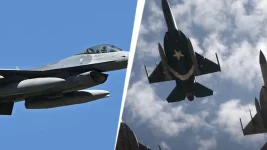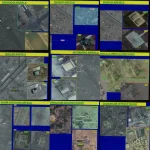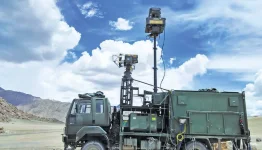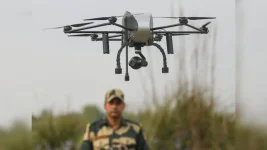Claims made by the Pakistan Air Force (PAF) regarding the supposed destruction of an Indian Air Force (IAF) S-400 air defence system at Adampur Air Force Station have been refuted by satellite imagery experts in India.
The PAF had disseminated satellite images purporting to show the aftermath of a strike, with a circled area on a patch of barren land labelled as the targeted S-400 system. However, independent analysis of recent satellite data by Indian experts has shown no evidence of any such attack or damage.
The PAF's attempt to substantiate its claim involved releasing a satellite picture titled "PAF Response (Targeting S-400 at Adampur)." This image featured a magnified view of an empty plot of land marked with a red circle, accompanied by text asserting it was "Orthorectified imagery of S-400 for accurate engagement."
Notably, the provided image did not display any common indicators of a successful strike, such as impact craters, scattered debris, or damaged military hardware, leading to immediate questions about the credibility of the assertion.
The announcement from Pakistan was met with considerable skepticism and derision from Indian defence commentators and the public on social media platforms. Many pointed out the lack of any visible damage in the imagery shared by the PAF.
One defence analyst remarked on the unusual nature of the claim, stating, "They circled a patch of dirt and called it a victory. This is beyond embarrassing." The incident also spurred numerous satirical comments and memes online.
The S-400 Triumf air defence system, procured by India from Russia, is a sophisticated, long-range surface-to-air missile system designed to counter a variety of aerial threats, including aircraft, unmanned aerial vehicles (UAVs), and cruise and ballistic missiles. These systems are strategically deployed to protect vital locations and enhance India's air defence capabilities against potential aerial incursions.
Given the S-400's advanced capabilities and strategic importance within the IAF's air defence network, the PAF's claim of destroying such a system was immediately viewed with doubt by military observers.
Following the PAF’s assertions, Indian satellite imagery specialists conducted a thorough examination of the latest high-resolution images of the Adampur airbase. Their findings confirmed that there was no visible damage or impact marks in the specific area highlighted by the Pakistani military.
An official associated with the Indian Space Research Organisation (ISRO) reportedly stated, "The imagery shows no signs of an explosion, structural damage, or any activity consistent with a strike on a military target like the S-400." The expert further clarified that the area circled in the PAF's image appeared to be an undeveloped field, situated away from any critical infrastructure at the airbase.
The Indian Air Force continues to maintain a high state of readiness along the border. The PAF's unsubstantiated claim follows earlier acknowledgments from the IAF's Director General of Air Operations regarding unsuccessful attempts by PAF aircraft to breach Indian airspace, during which all intruding aircraft were reportedly downed.
The use of satellite imagery in modern conflict often serves as a tool for intelligence and verification, but can also be employed in information warfare by propaganda states like Pakistan, making independent analysis crucial.







